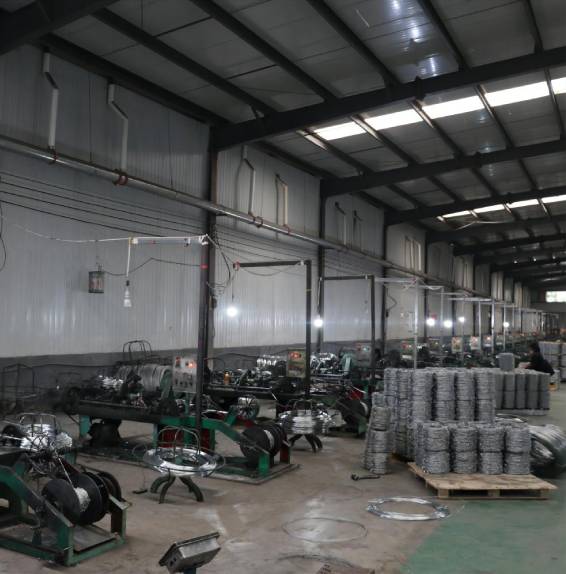Cost Analysis of Mesh Fencing for Various Applications and Projects
Understanding the Costs of Mesh Fencing A Comprehensive Guide
When considering an upgrade to your home or property, one of the essential aspects to evaluate is the fencing system. Among the various options available, mesh fencing has gained significant popularity due to its versatility, durability, and relatively reasonable cost. In this article, we will explore mesh fencing costs, the factors that influence these costs, and its advantages and disadvantages.
What is Mesh Fencing?
Mesh fencing, often made from galvanized steel wire, is designed in a grid pattern, offering a robust barrier while maintaining visibility. This type of fencing is particularly favored in residential, commercial, and agricultural settings due to its sheer functionality. Mesh fences can be used for various purposes, including security, delimiting property lines, and enclosing pets or livestock.
Factors Influencing the Cost of Mesh Fencing
1. Material Quality The cost of mesh fencing can vary significantly based on material quality. Higher-grade materials tend to come at a premium but offer increased longevity and resistance to rust and corrosion. Galvanized steel is more expensive compared to its vinyl-coated counterparts, but it often provides better durability.
2. Height and Length The price will also vary based on the height and length of the fencing required. Standard mesh fencing heights range from 3 feet to 6 feet or more, and longer runs will, of course, require more material. It is essential to measure your area carefully to estimate how much fencing you will need.
3. Installation Costs While some homeowners opt for DIY installation to save money, hiring professional fencing contractors can ensure a more secure and aesthetically pleasing outcome. Installation labor costs can range from $5 to $10 per linear foot, depending on local labor rates and the complexity of the job.
4. Gates and Accessories If your fencing requires gates or other accessories, these can significantly impact the overall cost. A simple single gate can add an additional $100 to $300 to your budget, depending on the size, material, and locking mechanism.
5. Location Geographic factors may influence costs. For instance, areas with high labor costs, or those situated in remote regions may experience increased prices for both materials and installation services. Shipping fees can also contribute to the overall expense if specialized materials need to be transported.
6. Permits and Regulations Depending on your municipality, you may need to obtain permits or adhere to specific zoning regulations regarding fence height, style, and placement. Factoring in these costs and processes is crucial when budgeting for your mesh fencing project.
Average Costs of Mesh Fencing
mesh fencing cost

On average, homeowners can expect to pay between $10 to $30 per linear foot for mesh fencing. This cost typically includes both materials and installation, but prices can vary based on the factors highlighted above. For example, a 100-foot section of fencing could cost between $1,000 and $3,000, while larger perimeter areas will increase accordingly.
Advantages of Mesh Fencing
1. Visibility One of the significant advantages of mesh fencing is that it allows for visibility, making it an excellent choice for properties where aesthetics matter or for areas that require surveillance.
3. Low Maintenance Once installed, mesh fencing typically requires little maintenance compared to other fencing materials, saving homeowners time and money over the years.
4. Cost-Effective Given its longevity and minimal maintenance needs, mesh fencing can be a cost-effective choice in the long run.
Disadvantages of Mesh Fencing
1. Security While mesh fencing provides a visual barrier, it may not be the best choice for extreme security needs. In high-risk areas, additional security measures may be necessary.
2. Wind Resistance Depending on the design and installation, mesh fencing may not hold up well against strong winds, causing it to sag or become damaged over time.
Conclusion
Investing in mesh fencing can be a practical choice for those looking for a reliable, cost-effective, and visually appealing option for their property. By understanding the factors that influence mesh fencing costs and weighing the advantages and disadvantages, homeowners can make informed decisions that align with their needs and budget. Whether you are looking to enhance security, define property lines, or keep pets secure, mesh fencing is a versatile solution worth considering.
-
Space-Saving Chain Fence Hacks Vertical Gardening with Cyclone MeshNewsJul.16,2025
-
Innovations in Iron Nail Wire Production for Modern ConstructionNewsJul.16,2025
-
Creative Uses of Wire Netting Fence in Modern Landscape DesignNewsJul.16,2025
-
Barbed Wire Fence Innovations in Anti-Climb TechnologyNewsJul.16,2025
-
Architectural Uses of Umbrella Nails for Aesthetic Roof DesignsNewsJul.16,2025
-
Architectural Uses of Razor Barbed Wire in Secure Urban DesignNewsJul.16,2025




